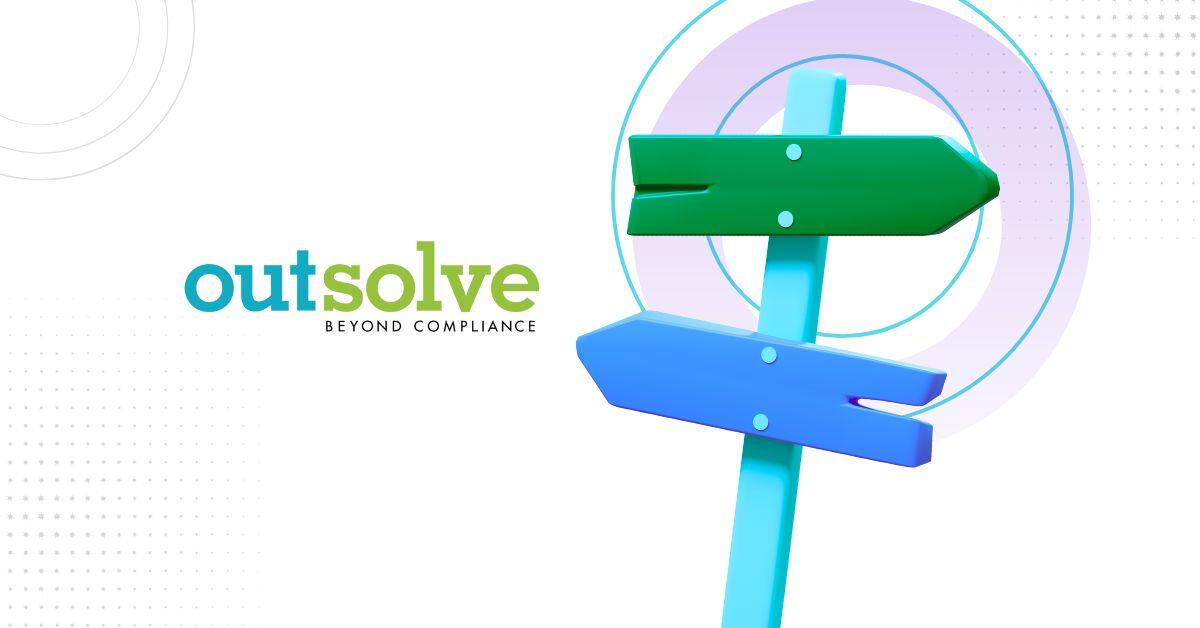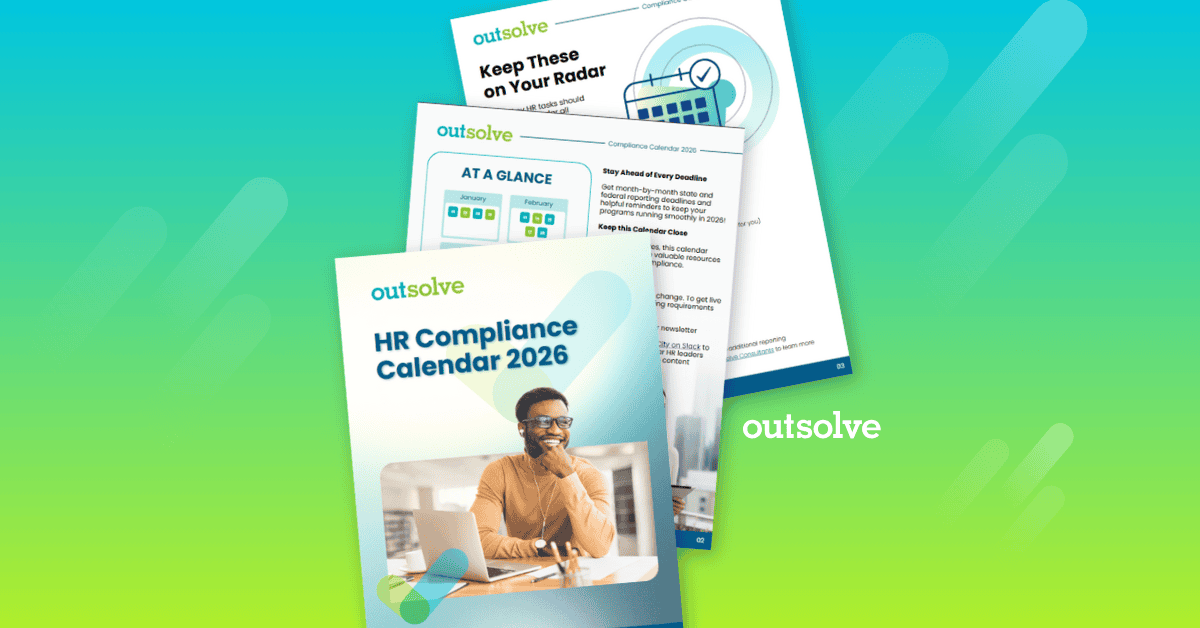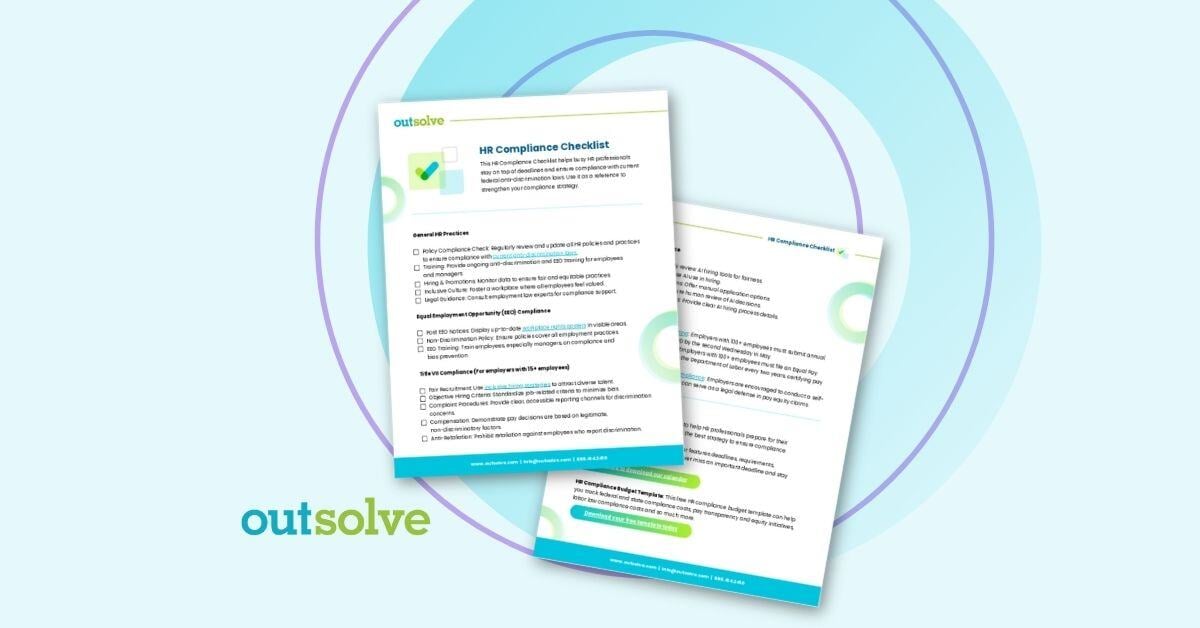
As an HR leader, embarking on the pay equity journey isn't just a regulatory obligation — it's an opportunity to align your human resources practices with your organization's deepest values of fairness and transparency. This journey will challenge you to scrutinize and refine your compensation strategies, ensuring that every employee's pay is not only compliant with the law but is also a true reflection of their value and contribution to the company.
With every step you take, from conducting thorough pay equity analyses to implementing transparent pay structures, you're building a stronger, more ethical workplace that resonates with current and future top talent. Let's dive into this transformative process together, reinforcing our commitment to fairness and setting a gold standard in equitable employment practices.
Why Embark on a Pay Equity Journey?
Pay Equity is both a moral imperative and a legal necessity. In the United States, significant laws such as the Equal Pay Act of 1963 and Title VII of the Civil rights Act of 1964 mandate that pay disparities based on gender and other non-job-related factors must be eliminated. Despite these laws, women still earn approximately 80 cents for every dollar earned by men, highlighting the persistent gender wage gap.
By developing comprehensive pay equity plans, you not only align with these federal regulations and pay equity laws but also lead the charge in correcting pay inequalities within your organization. This journey involves meticulous analysis of your pay data, ensuring that all compensation is fair and justified by legitimate job-related reasons. In the private sector, this commitment enhances compliance with Department of Labor guidelines and positions your company as a leader in ethical business practices.
So, why embark on this journey? Because it strengthens your organization’s foundation on principles of fairness and equality, boosts employee morale, and significantly enhances your reputation in a competitive marketplace. Let's set a standard for others to follow, making sure that every employee is valued and rewarded for their contributions.
Mastering the 5 Essentials of Fair Compensation
Achieving fair pay starts with understanding key terminology so leaders can manage and advocate for equity within their organizations. Each of these terms contributes to a broader understanding of fair compensation while empowering leaders to implement meaningful changes. Understanding the important elements of pay equity sets the stage for equality in the workplace.
1. Fair Pay
HR leaders can be champions of fair pay by designing systems that compensate employees equitably for their work- regardless of gender, race, or any other non-job-related factors. Fair pay means rewarding employees in alignment with their duties, skills, and performance. It requires salary ranges that are informed through market data and clearly communicated in your job postings. By implementing these practices, you can actively work towards closing the gender pay gap and other pay disparities.
2. Pay Equity
Pay equity is the principle that employees performing similar or substantially similar work should be compensated equally. To improve pay equity, start by conducting a pay equity analysis and audit to identify disparities in compensation among employee groups. Conducting this analysis and addressing the inequities it uncovers can bring you into compliance with pay transparency legislation, which seeks to eliminate pay discrimination and promote fairness in salary practices.
3. Equal Pay
Equal pay refers to the principle that employees the same job within a company should receive identical compensation, regardless of their gender, race, or other personal characteristics. This concept is based on "equal pay for equal work." Organizations may perform pay equity audits to ensure that salary history doesn't unfairly influence current pay decisions. Employers should maintain equitable pay ranges across identical positions to deliver on equal pay.
4. Pay Gaps
Pay Gaps refer to the differences in average earnings among different groups of employees, most notably observed between men and women- often call the gender pay gap. These disparities aren't just numbers; they reflect underlying issues in pay equity that can impact your workforce's morale and your organization's reputation.
5. Pay Transparency
Pay transparency can be pivotal in shaping a fair and equitable workplace. Pay transparency means openly sharing how salaries are set and how pay decisions are made within your organization. It's about lifting the veil on compensation practices, ensuring that everyone, from current employees to potential hires, understands what influences their pay.
By adopting this approach, you foster trust and accountability, paving the way for a culture where pay equity isn't just discussed but actively pursued. Engaging in this level of openness can significantly diminish uncertainties around compensation and bolster your organization’s reputation as a transparent and fair employer.
Design and Implement a Pay Equity Program in 7 Steps
Establishing a robust pay equity program is a bold move toward transforming your organizational culture into one that champions fairness and transparency. This process involves strategic planning, analysis, and proactive engagement with your entire team.
Take the following steps to assess current compensation practices, identify disparities, and implement solutions that ensure equitable pay across your organization.
1. Conduct a Compensation Review
Review your company's pay and benefits to see whether current practices are fair and competitive, both internally and compared to peer companies and industry benchmarks. This review can set expectations for how leaders should adjust pay practices to better meet market standards and employee expectations.
Start by collecting detailed information about current compensation structures, including base salaries, bonuses, benefits, and perks. Make sure this data is viewable by job role, department, and other relevant filters. This analysis should also consider differences in pay related to variations in job responsibilities, experience levels, and performance metrics. The goal is to identify disparities that can’t be explained by reasonable factors, especially among similar or identical roles within the organization.
Next, benchmark your compensation data against similar roles in comparable organizations within the same industry. This requires accessing up-to-date salary surveys and compensation reports to determine where your organization stands in the marketplace. This analysis highlights not just fairness but also whether existing compensation packages are attractive enough to retain employees and attract new talent.
Based on these findings, identify and adjust compensation policies to address disparities and improve competitiveness. This might include raising salaries for underpaid positions, revising bonus structures, or improving benefits to align more closely with market standards. Regularly updating these compensation structures and policies is crucial to maintaining fairness and competitiveness over time.
2. Define Your Pay Philosophy
Your pay philosophy guides compensation decisions and reflects the organization’s commitment to fairness, competitiveness, and transparency. It's the foundation for making informed pay decisions and effectively communicating compensation strategies throughout the organization.
Defining a pay philosophy involves articulating a set of guiding principles that reflect how an organization values its workforce and manages its compensation strategy. Here are some steps for doing so in your organization.
-
-
- Align with organizational values and goals: The pay philosophy should align with the organization's mission, values, and strategic objectives. It should support the company's goals such as performance outcomes, career growth, or employee satisfaction.
-
-
-
- Outline compensation objectives: State what the organization aims to achieve with its compensation strategy. This could include attracting top talent, retaining high performers, or rewarding excellence or innovation.
-
-
-
- Incorporate fairness and transparency: A strong pay philosophy is built on the pillars of fairness and transparency. It should make it clear that the organization is committed to equitable pay practices and is open about how compensation decisions are made. This transparency helps build trust and can improve employee engagement.
-
-
-
- Engage stakeholders: Developing a pay philosophy requires input from stakeholders across the organization, including leadership, HR, and unions. This engagement helps ensure that the philosophy is well-rounded, widely accepted, and reflective of organizational culture and workforce needs.
-
-
-
- Communicate repeatedly: Once defined, the pay philosophy should be communicated to all employees- and across multiple channels. Employees should be able to see how pay decisions are made and how they align with the organization's goals and values. When pay policies are communicated in multiple ways, including in writing, leaders demystify compensation practices and help employees feel like they're being fairly paid for their skills and performance. Explaining how the company's compensation philosophy and how it translates into specific practices. Highlight how pay is determined based on factors like experience, skills and market value. Finally, let employees know that fair pay analyses are conducted annually to ensure pay systems are working as expected.
-
-
-
- Review and adapt: As market conditions, organization goals, and workforce dynamics evolve, the pay philosophy may need to change. Regularly review the pay philosophy to see whether it's relevant, effective, and aligned. Examples of these changes might be if a company acquires another organization from a different geography and they need to expand pay philosophy to reflect the economy of that specific geography or companies that are growing at a rapid pace and need to adjust pay philosophies to account for their growth.
-
3. Write Accurate Job Descriptions
Improving pay equity starts with job descriptions, especially in maintaining internal equity. Job descriptions should reflect the responsibilities, skills required, and experience levels necessary for each role. This clarity removes confusion for candidates and helps employers evaluate the job accurately when determining compensation levels.
Additionally, detailed job descriptions serve as a benchmark for internal comparisons of pay differences and are crucial for conducting pay equity analyses. They allow HR professionals to fairly assess and compare roles within the organization, ensure compliance, and improve transparency in compensation, promotion, and hiring processes.
4. Establish Intentional Pay Structures
Pay equity requires careful attention to pay structures so that inequities don’t develop. One way of addressing this is by creating a system of pay grades, salary bands, and promotion pathways that align with the organization’s strategic goals and pay philosophy.
This system should be transparent while steering compensation decisions toward consistent and equitable outcomes across the organization. Formalizing pay structures helps organizations eliminate ambiguities and create a clear, understandable framework that guides HR decisions and employee expectations.
One step in creating intentional pay structures is job leveling, where roles are categorized based on their responsibilities, complexity, and organizational value. This categorization helps maintain fairness in pay across different company levels and functions.
By defining and communicating these structures, organizations can create a sense of fairness and transparency among employees. This can bolster employee engagement and retention, among other benefits.
Remember to regularly review pay structures in light of changing market conditions, shifting organizational needs, or changes in job roles. Pay structures should always align with business objectives and fair compensation practices.
5. Invest in Pay Equity Maintenance
A robust pay equity maintenance plan formalizes the review and reassessment process of pay equity, allowing companies to promptly identify and rectify emerging discrepancies. Pay equity maintenance also requires keeping track of legislative and regulatory changes that could affect compensation policies.
This plan should also encompass continuous education and training for HR and management teams. Help company leaders and line managers understand the significance of pay equity and how to make informed, fair compensation decisions.
By proactively revisiting and refining pay practices, organizations maintain and strengthen their dedication to equitable treatment. The result is that every employee's compensation reflects their role, duties, value, and contribution to the company.
6. Communicate Your Commitment to Pay Equity
Pay equity must be a living practice, not a document. Communicate the strategy and policies related to fair compensation to all stakeholders, and to employees in particular. Outline how the organization determines pay, how equity is measured and maintained, and how pay discrepancies are identified and remedied. By openly discussing these practices, leaders can foster trust and demonstrate their dedication to fair pay practices.
Ongoing communication about improving pay equity should include sharing results from pay equity analyses and how these findings are being addressed. Employers might explain changes in pay structures or what adjustments were made to align with market standards and internal equity goals. Regular updates about these efforts keep employees informed and maintain an open dialogue about fair and equitable compensation practices. Complement this communication with accessible documentation of pay equity practices, policies, and findings.
Your communications action plan may have many components with the goal of building trust and transparency with employees. A clearly-written employee handbook should contain a comprehensive commitment statement explaining the company's commitment to fair pay. Detailed compensation factors can be described such as experience, skills, job performance, and market rates. The handbook should emphasize transparency in the process for setting and reviewing pay, and be updated regularly to reflect changes in the pay policy or compensation factors. Additionally, your company's internal website should have a dedicated section to the fair pay policy using engaging visuals and interactive tools where employees can find answers to common questions about their pay. Bottom line, you should have regular communication to inform employees that the company regularly conducts pay equity analyses to ensure fairness. Employees should be encouraged to participate in the process by providing feedback and raising any concerns. Ensure their voices are heard.
7. Keep Up with Pay Equity Trends
Fair pay practices can improve employee engagement, contribute to more effective hiring, and help retain key workers. But creating a pay equity program is only the first step. Company leaders must continue to evaluate and update their pay strategies as conditions change, skill sets and job roles evolve, and as employees enter or exit the organization. Achieving pay equity is an ongoing goal, not a one-time project.
Taking a proactive approach to your pay equity program ensures compliance, supports a positive company culture, and contributes to better overall business performance. Going further with regular reviews and updates demonstrate a long-term commitment to fairness and equal treatment in the workplace. Sharing "It's a Journey, Not a Fixed Destination: The Road to Effective Pay Equity" with your compensation and total rewards team gets everyone on the same page and is the first step in your pay equity journey. OutSolve's compensation experts stand ready to assist you in this pay equity journey.
![]() Watch the Webinar
Watch the Webinar
It’s a Journey, Not a Fixed Destination: The Road to Effective Pay Equity
Leading Compensation Services at OutSolve, Neil helps organizations align pay, performance, and compliance through data-driven benchmarking, pay equity analytics, and global pay transparency initiatives. His team partners with employers across industries to design and operationalize compensation programs that are fair, competitive, and compliant—supporting business growth, workforce trust, and readiness for evolving regulations, including the EU Pay Transparency Directive. Neil brings over 20 years of experience working with HR, Talent Acquisition, and Compensation teams across the country to build best-in-class compliance programs. He has supported clients in EEOC equal pay charges and has also designed Pay Equity Analytics to provide federal contractors better visibility to pay gaps within their organizations. Neil regularly delivers training on compensation topics for SHRM, ILG, and other industry HR group events. Neil received his undergraduate degree from the University of South Carolina and The University of Hull in England and his MBA from The Citadel. He is also SHRM certified.
Weekly OutLook
Featured Posts

New Year, New Deadlines: 2026 HR Compliance Calendar

outRageous HR: Plan Now or Pay Later
Related Posts

In-House or Outsourced I-9 Management: Which Is Best for Your Organization?
Every U.S. employer, regardless of size or industry, is required by law to confirm each new hire’s identity and verify that they are authorized to...

outRageous HR: Building a Compensation Strategy That Actually Works
If your compensation strategy is mostly “gut feeling” plus whatever you did last year… it’s time to rethink your approach.

HR Compliance Checklist: What Every HR Pro Needs to Know
During times of sweeping change to federal laws, and with new state laws being enacted, it's more important than ever for HR professionals to ensure...
 Neil Dickinson
Neil Dickinson

